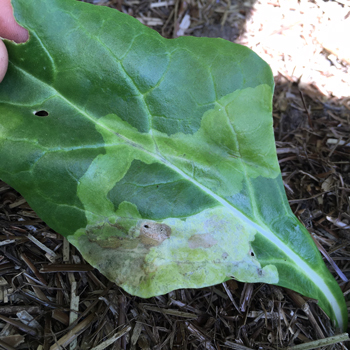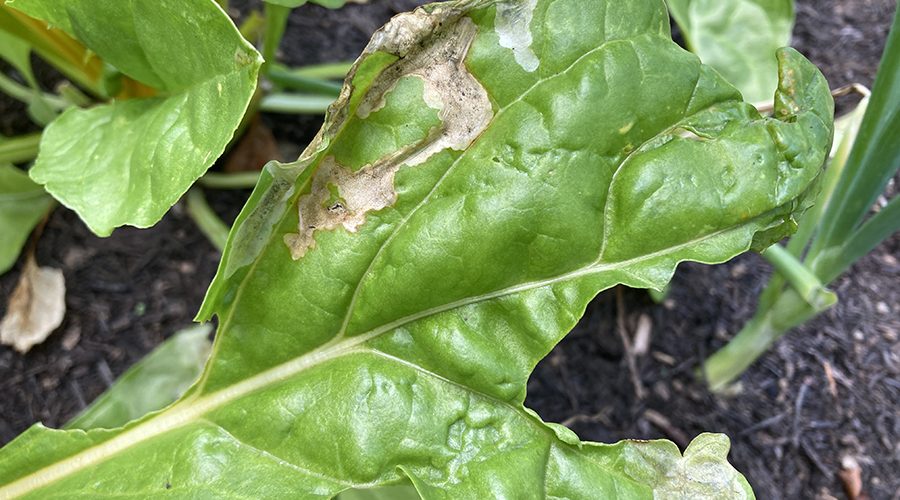This is a very common sight for growers of chard and other leaf beet, like perpetual spinach. It is the work of the leaf miner, and it’s not a disaster, so you can still enjoy lots of chard.
Blisters like those pictured are the work of the leaf miner, a fly larvae that buries between the top and bottom layers of the leaf and nibbles a tunnel which can eventually become quite widespread as pictured.
 What is leaf miner?
What is leaf miner?
Leaf Miner is a small fly that lays its eggs on beet and chard leaves. When the eggs hatch the larvae/maggots “mine” into the leaves and tunnel in between the top and bottom surface of the leaves leaving a trail.
When is it a problem?
Leaf Miner is usually a problem in late spring and summer when the larvae hatch.
How to recognise it
The first sign is seeing a small brown/white trail forming on leaves. Eventually the leaf miner will cause enough damage that the leaves seem to blister, with a pocket of air forming between the two layers of the leaf.
What to do
If you do see signs of it, it’s a really good idea to destroy the leaves rather than leaving them on the compost pile as the maggots will turn into flies and the cycle will start again. If your veg patch suffers from them it is sensible to grow any chard/beet leaves under fleece in future.

